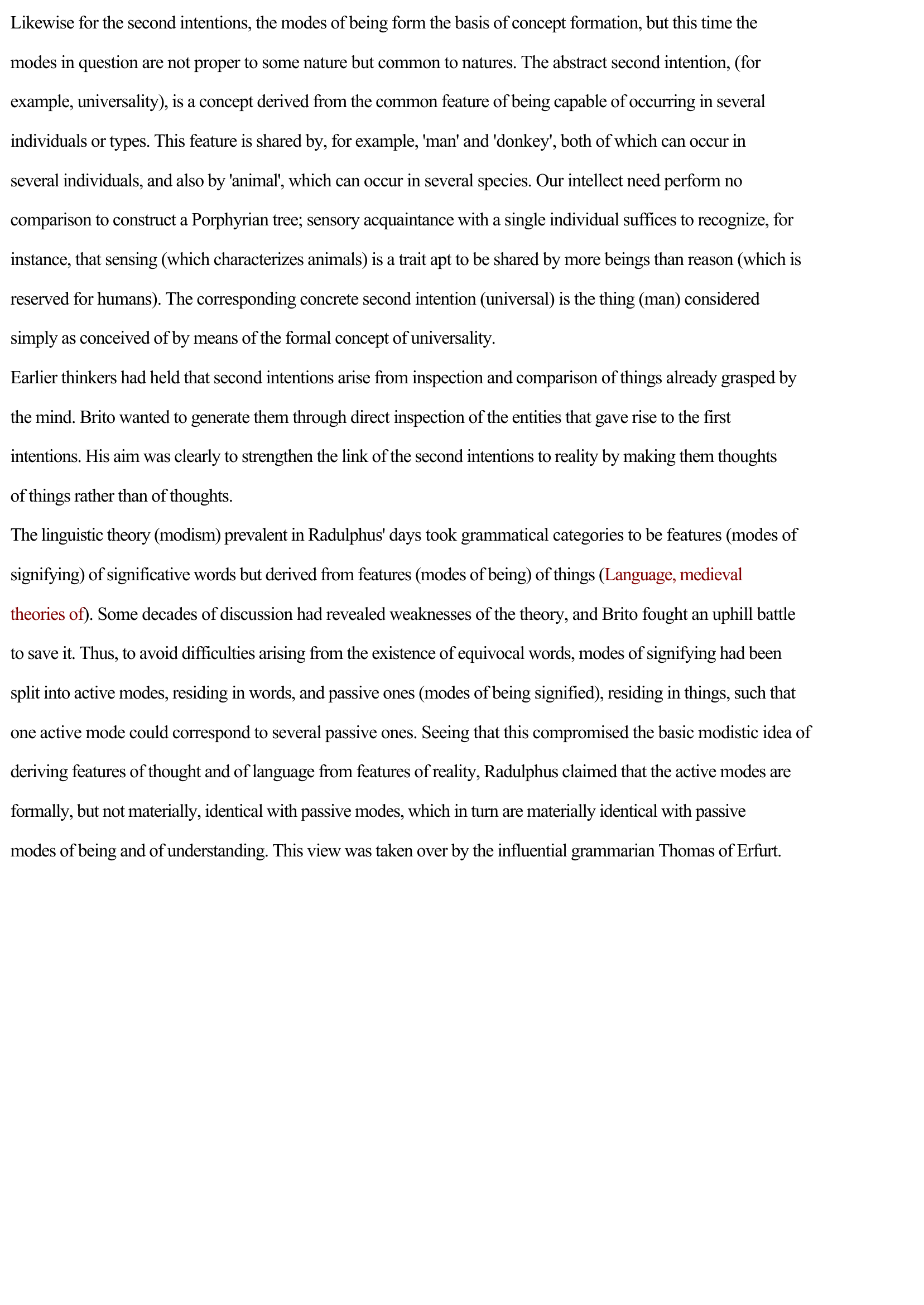Brito, Radulphus
Publié le 22/02/2012
Extrait du document
«
Likewise for the second intentions, the modes of being form the basis of concept formation, but this time the
modes in question are not proper to some nature but common to natures.
The abstract second intention, (for
example, universality), is a concept derived from the common feature of being capable of occurring in several
individuals or types.
This feature is shared by, for example, 'man' and 'donkey' , both of which can occur in
several individuals, and also by 'animal' , which can occur in several species.
Our intellect need perform no
comparison to construct a Porphyrian tree; sensory acquaintance with a single individual suffices to recognize, for
instance, that sensing (which characterizes animals) is a trait apt to be shared by more beings than reason (which is
reserved for humans).
The corresponding concrete second intention (universal) is the thing (man) considered
simply as conceived of by means of the formal concept of universality.
Earlier thinkers had held that second intentions arise from inspection and comparison of things already grasped by
the mind.
Brito wanted to generate them through direct inspection of the entities that gave rise to the first
intentions.
His aim was clearly to strengthen the link of the second intentions to reality by making them thoughts
of things rather than of thoughts.
The linguistic theory (modism) prevalent in Radulphus' days took grammatical categories to be features (modes of
signifying) of significative words but derived from features (modes of being) of things ( Language, medieval
theories of ).
Some decades of discussion had revealed weaknesses of the theory, and Brito fought an uphill battle
to save it.
Thus, to avoid difficulties arising from the existence of equivocal words, modes of signifying had been
split into active modes, residing in words, and passive ones (modes of being signified), residing in things, such that
one active mode could correspond to several passive ones.
Seeing that this compromised the basic modistic idea of
deriving features of thought and of language from features of reality, Radulphus claimed that the active modes are
formally, but not materially, identical with passive modes, which in turn are materially identical with passive
modes of being and of understanding.
This view was taken over by the influential grammarian Thomas of Erfurt..
»
↓↓↓ APERÇU DU DOCUMENT ↓↓↓

































